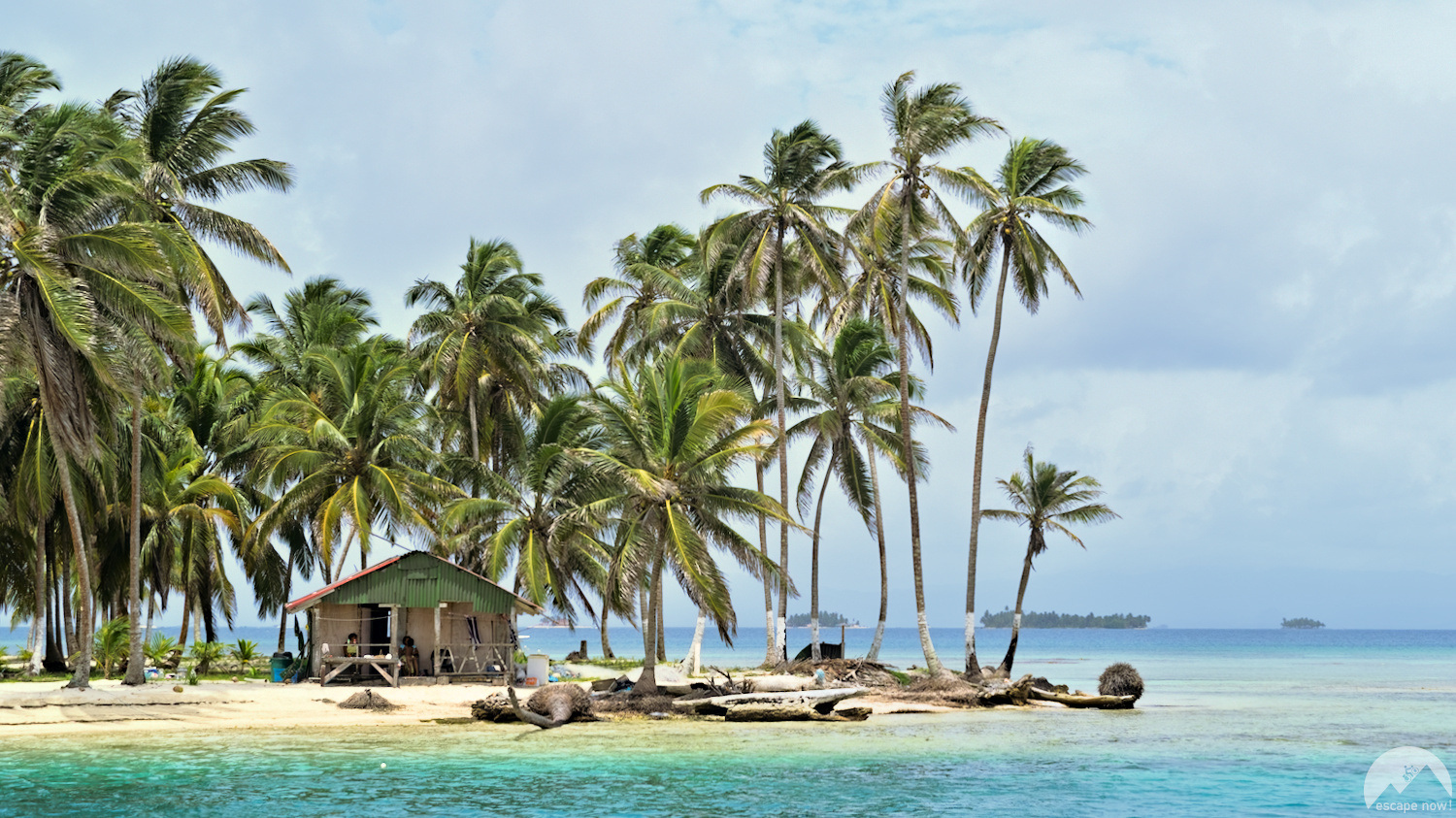
Mornings in paradise.
As I wake up, there is a gentle rocking around me. Through an open hatch I hear the mild sloshing of water. The smell of coffee in the air drives me out of my bunk and onto the deck. The view that awaits me outside is absolutely surreal. We’re anchored off a tiny little island with just a few palm trees and one, two or three primitive huts. The inhabitants are relaxing on the veranda of the hut directly opposite us. The island is so narrow that you can already see the sea on the other side through the palm trees and other small islands in the distance. Am I just dreaming or have I actually woken up in this completely different world?
Stretch it Baby!
There is no legal and safe way to get from Panama to Colombia by land. The Darién jungle on the land bridge between North and South America is one of the most inaccessible areas in the world. It’s crazy when you consider that it is the place that connects two continents. But from a global political point of view, nothing will change; the North seems to be quite happy with this situation. There are three main options for travellers to get around the Darién Gap. The cheapest option is by plane, which is also the least environmentally friendly. However, small boats, known as lanchas, also leave the mainland from Cartí in Panama and then head for various islands in the San Blas Islands group. This group of islands belongs to Panama, but is under the self-administration of the Guna Yala people who live there. It takes three to five boats to reach Necoclí in Colombia via this group of islands. This is probably the most adventurous way to circumnavigate the Darién Gap, as you have to talk a lot with the various captains and you don’t know exactly when you will actually arrive. I only had a bad feeling about this option because of my bike, as the lanchas sometimes hit the waves quite hard and other bike travellers apparently have broken their bikes.
The third option is to travel on a sailing boat. The Puerto Lindo – Cartagena route is regularly travelled by sailing boats that have made it their business to take travellers from North to South America or vice versa. The whole thing combined with a few days of leisurely island hopping through the San Blas Islands. In the end, that was exactly what I chose. And even though I’m usually more of a fan of self-organised, independent adventures, the sailing trip was a great change from my cycling lifestyle and it was worth every single dollar.


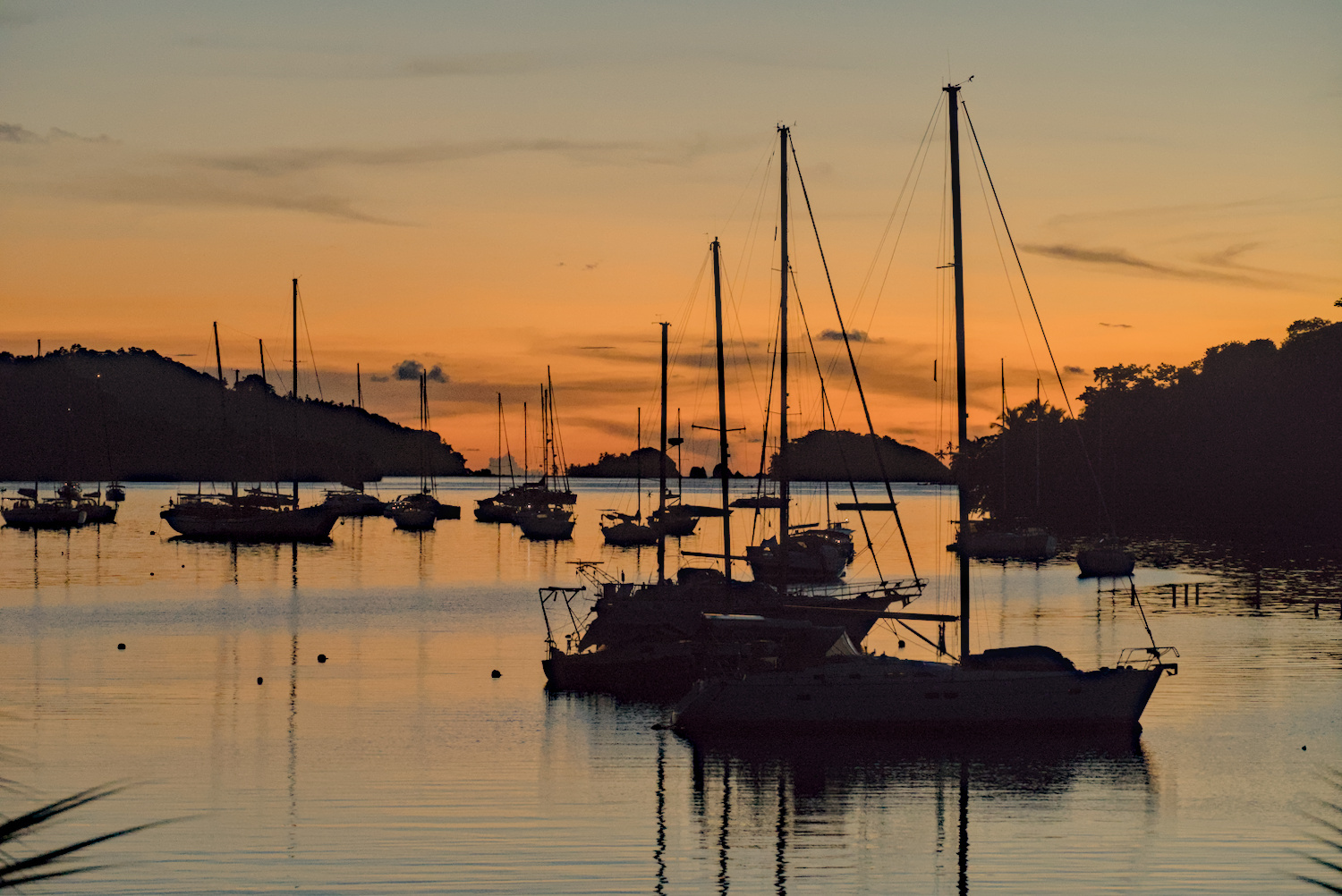
I arrived at the marina in Puerto Lindo in the morning. As the boat wasn’t due to leave until the evening, there was still more than enough time to get the Beast ready for sea. I dismantled the pedals, turned the handlebar 90 degrees and removed a few of the small bags. I had brought a large roll of stretch film with me from Panama City. It wasn’t the easiest thing to do on my own, but after a while the bike was wrapped in several layers of stretch film. I also secured critical areas with gaffa tape. The result was a fairly stiff ‘bike package’, which I hoped would remain watertight until Cartagena. In the end, the crew placed the bike next to the mast in a rather iconic position and tied it to it. I couldn’t have wished for a better place for the Beast.
There’s always a weird bird
Sometime in the afternoon, my eleven fellow travellers arrived at the marina on a minibus. They were all collected in Panama City – the place I had already left a few days ago. A mix of western tourists – Europeans, Australians, Kiwis, Americans; four couples and three solo travellers. Apart from one young couple, they were not just on a short holiday, but more or less backpacker-style travellers. And if there’s always one weird bird in every hostel that somehow stands out, this time it was probably me in our travel group – the guy with the bike who had been travelling for what felt like forever.
After a short initial briefing on board La Gitanita, we still had time to fill our bellies one last time on the mainland. We ate in the marina’s small restaurant and toasted together for the first time while the crew stowed our luggage, took our passports to Puerto Bello for stamping and made the final preparations.
The crew consisted of Captain César, first mate Ed and second mate Memo – a super well-synced, very friendly team. I felt completely safe and well looked after in their hands. And even though sailing tourists back and forth between the two countries is their bread and butter, their friendliness never seemed fake. Everyone was extremely authentic and I didn’t feel like I was part of an endlessly repeated theatre play.
The sun was long gone by the time we departed at around 10 o’clock in the evening, albeit not under sail but with the diesel engine humming away. The dark silhouettes of the boats anchored in the bay and the contours of the hills of the mainland to the right and the small islands to the left slowly passed us by until we later reached the slightly more open sea. I went to sleep at some point, only to wake up the next morning to the smell of coffee in absolute paradise.
Set sail, the sea is calling!


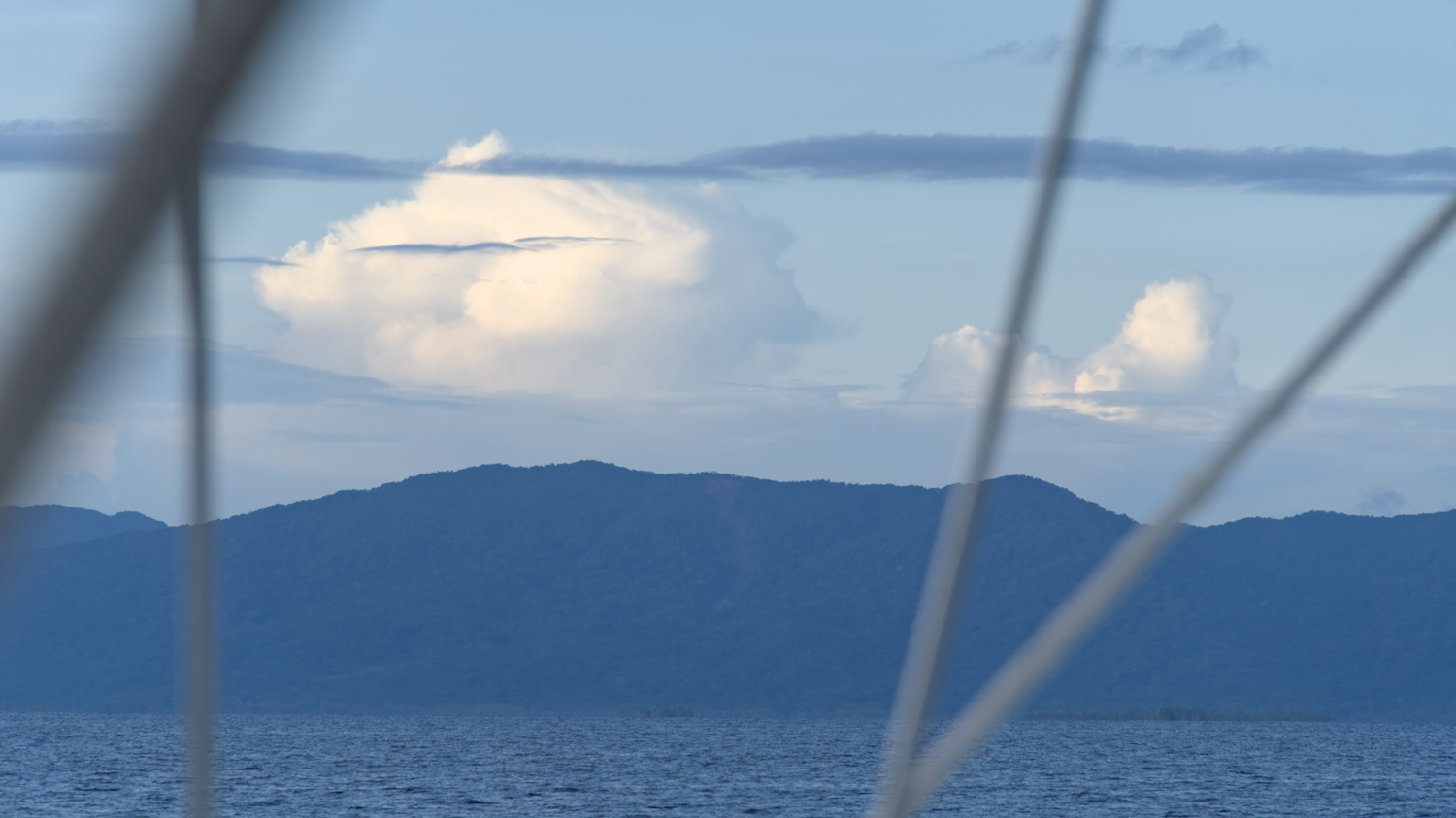
Crossing a stretch of sea on a sailing boat had been on my wish list for a long time – with the trip from Panama to Colombia, this finally came true. I had only seen sailing in videos and on a short trip on Lake Cospuden near Leipzig. But now I was on board La Gitanita for six days and was able to get a more extensive impression of life at sea, albeit only as a guest and in extremely mild conditions in the Caribbean.
We were pretty lucky with the weather. The sea was very calm, almost too calm. The engine was often running because there wasn’t enough wind to keep the crew on schedule. It was only during the island hopping that there were perfect conditions for sailing under sail. And that was a pretty great feeling when the boat was leaning slightly and gliding through the waves at some speed, driven only by the wind. There was less space on deck due to the unrolled sails and I had to hold on tight to avoid going overboard on the way towards the bow. For the final passage on the open sea towards Colombia, the engine had to be used again to support the partially unfurled mainsail. But perhaps that was just as well, as a tropical storm rolled in not too far away from us, but we managed to escape it in time.

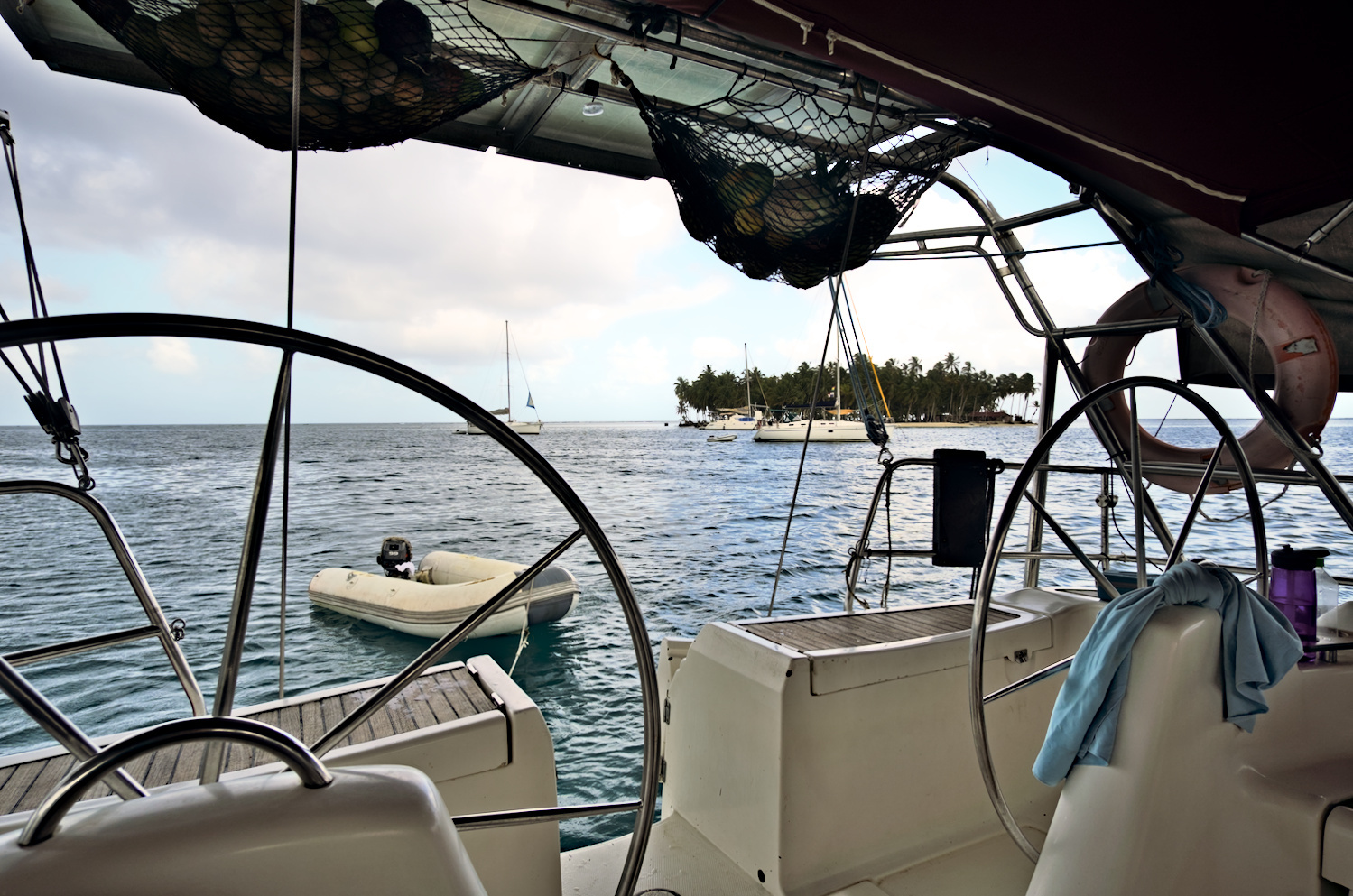
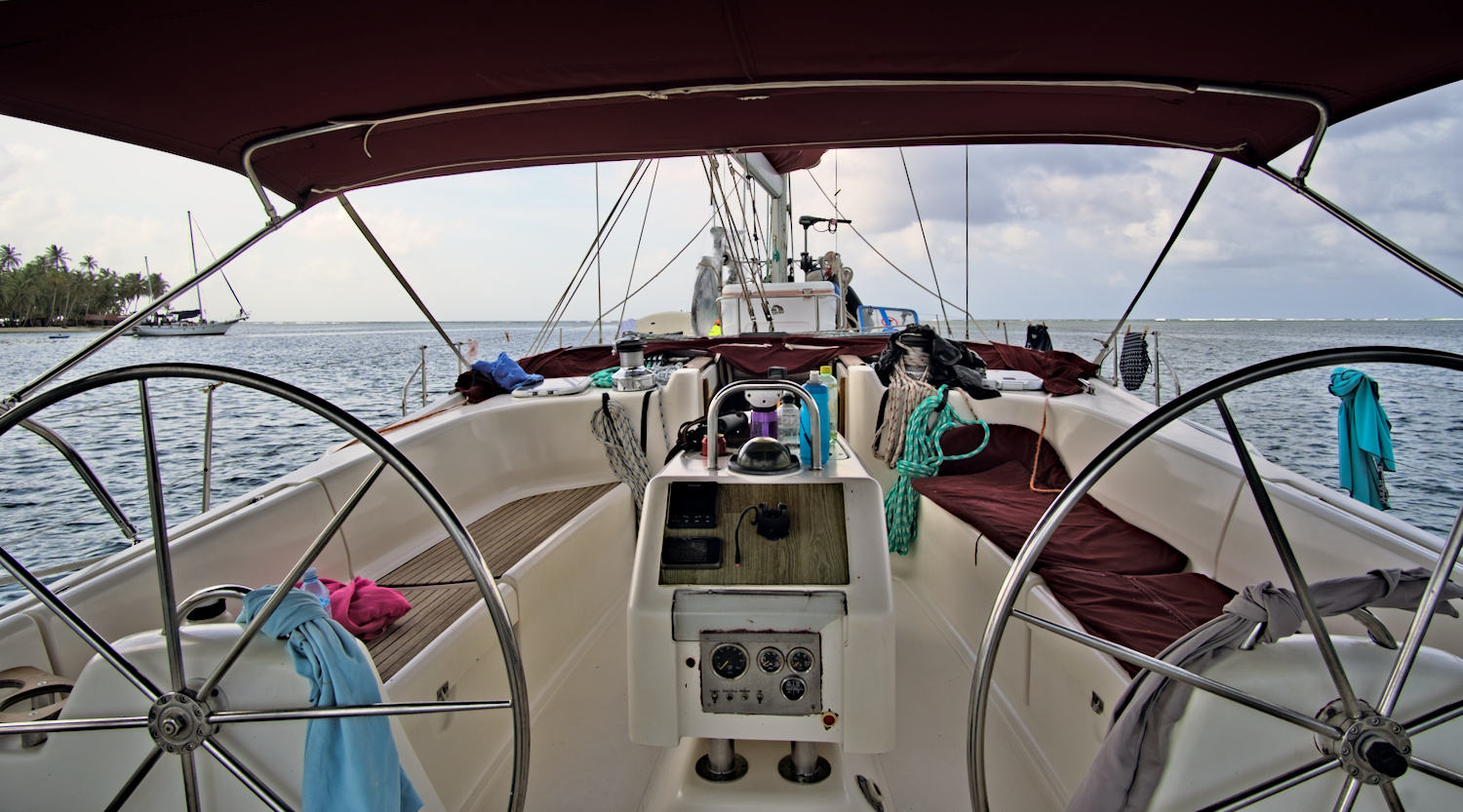


The boat was a Dufour monohull around 16 metres long and 4 metres wide. Inside there were a total of five cabins, each with its own bathroom. There was also a saloon with a small kitchen where the extremely tasty food was prepared. The crew shared the saloon and the benches outside in the cockpit for sleeping.
From island to island
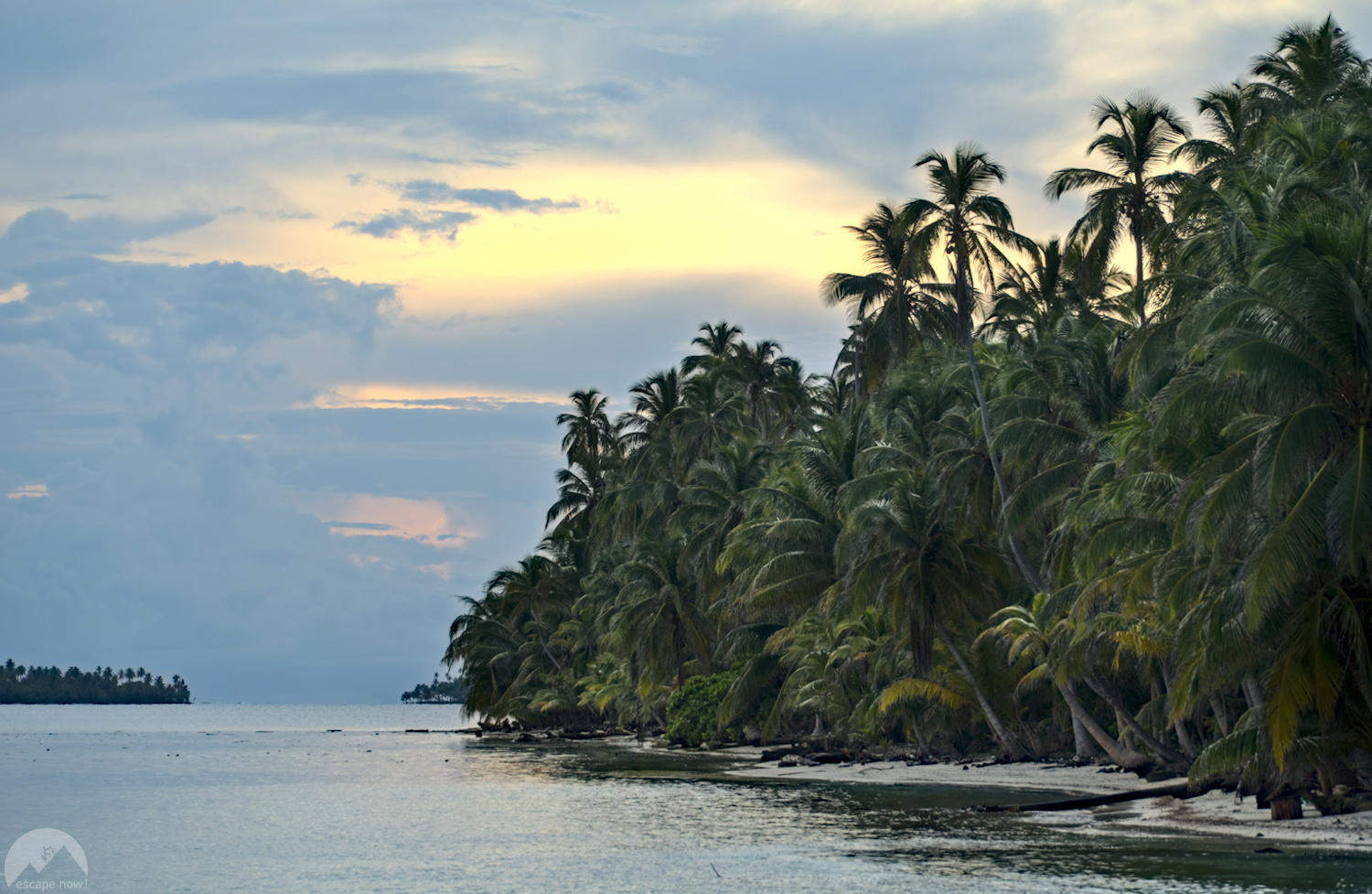
There are around 365 islands within the San Blas Islands. During the three days we spent in the archipelago, I set foot on six of the islands and saw countless others from a very short distance. They were always very flat islands with fine, light-coloured sandy beaches, dominated by coconut palms and some green undergrowth beneath the palms. The islands were often so small that you could easily walk round them in under half an hour. Directly in front of the islands there were usually coral reefs whose colours competed with the fish living in them. The water had bathtub temperature and the waves only lapped gently. And in terms of the population, it was rather sparse. Although there were a few simple wooden huts on all the islands I visited, only some of them were currently inhabited. Smaller neighbouring islands were mostly completely uninhabited – dense settlement looks different. Whenever I was exploring the side of an island away from our anchorage, I was completely alone – all that was missing was Friday’s appearance to be in the middle of a scene from Robinson Crusoe. In short, it was exactly what you would imagine a Caribbean paradise to be.


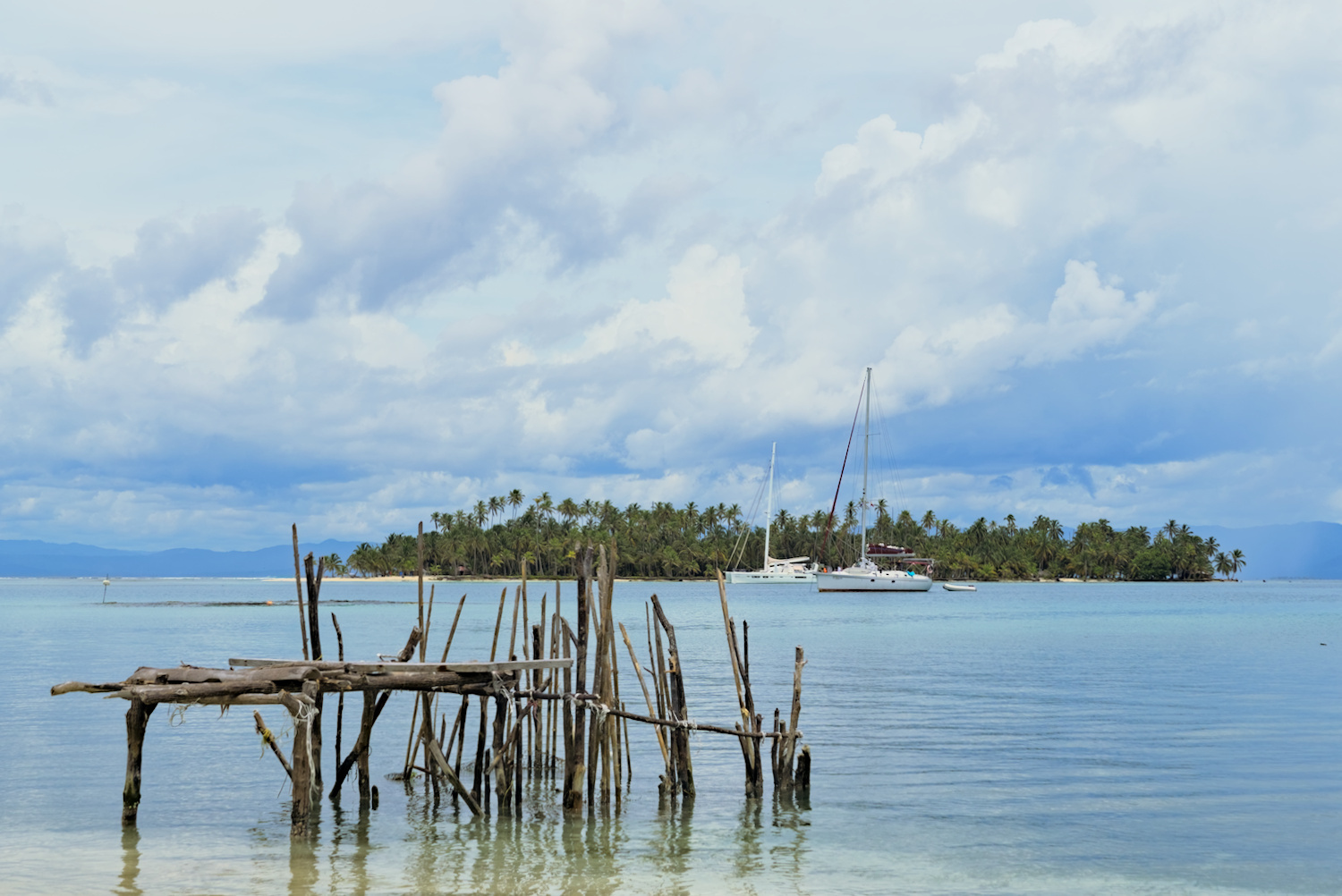
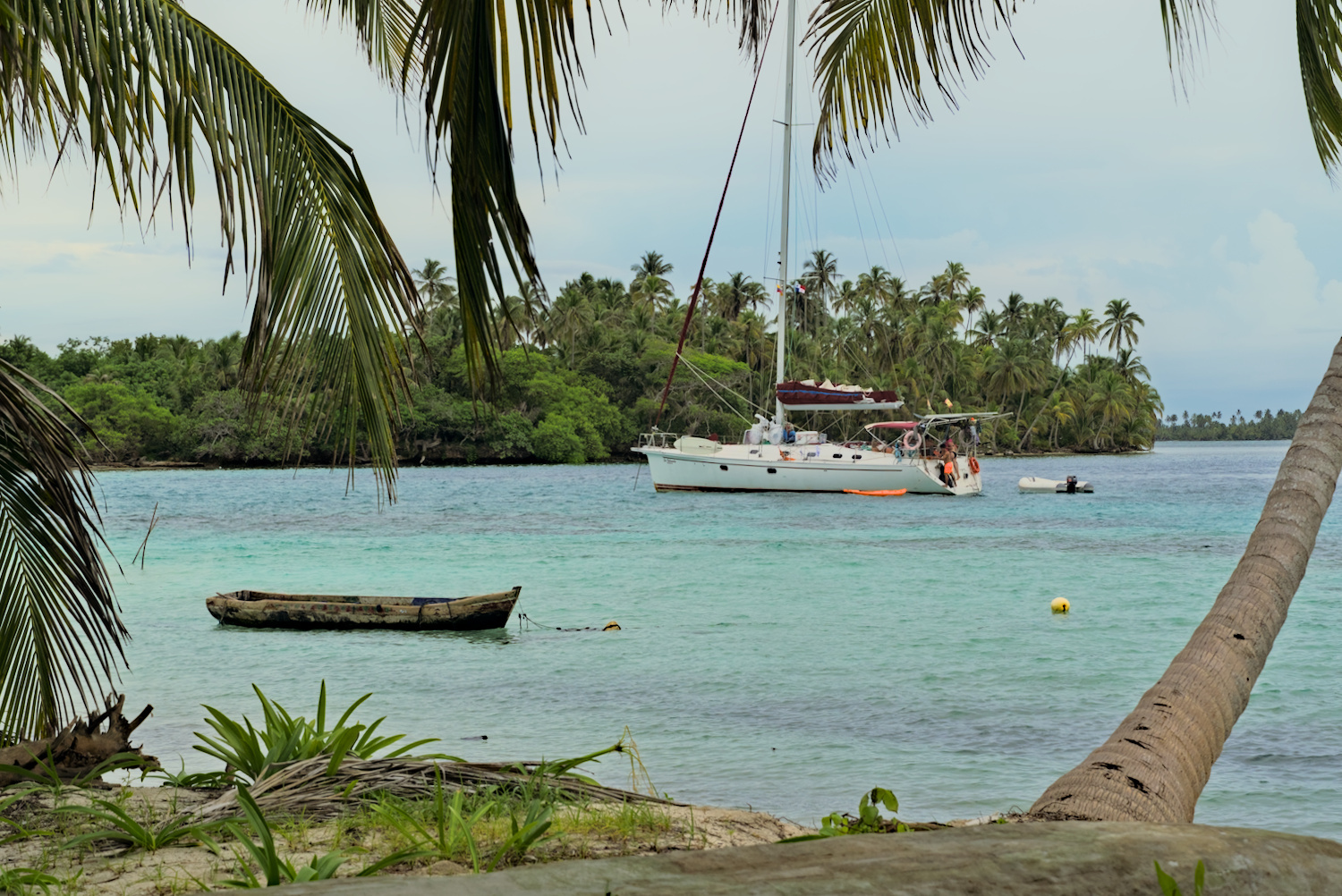

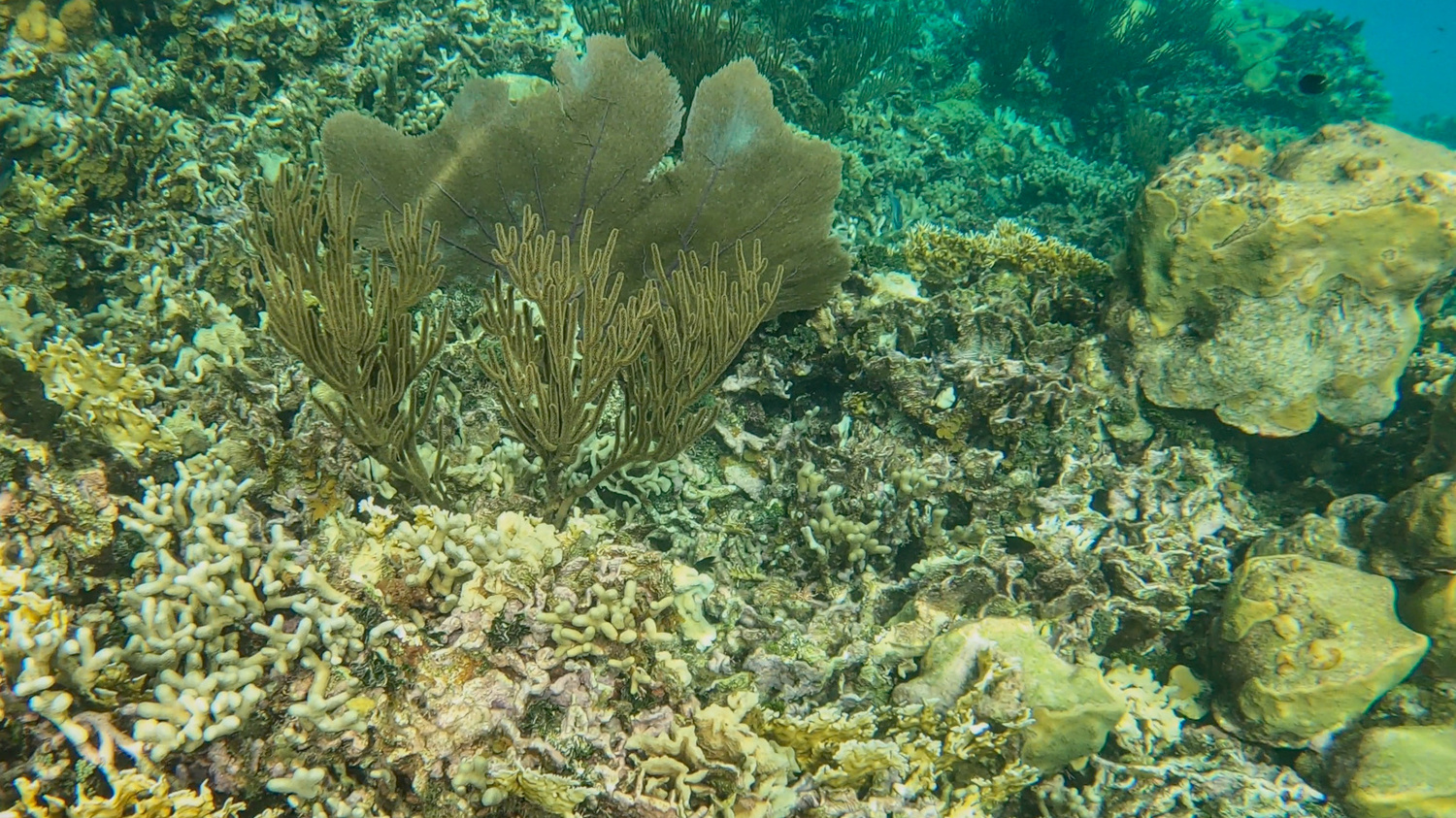






The crew did their best to ensure that we could really enjoy this paradise. Delicious meals were served three times a day, and there was always something different even at breakfast. As a culinary highlight, Captain César grilled lobster and crab for us on the last day before the big sea passage, and we then had fish for dinner in a small local island restaurant. If we were thirsty for coffee, all it took was a nice question. If I wanted to go ashore from the boat with my camera, I could always be taken over in the dinghy; there was equipment to borrow for snorkelling and a stand-up paddleboard was also available to pass the time.
We spent a whole day at our first anchorage. This meant we could also spend a whole day observing the inhabitants of the island directly opposite us. The more time I had, the more I wondered how different their lives are. There is simply nothing else growing on the islands that can be utilised other than coconut palms. Of course, there is also the sea, which is fished by the Guna Yala – small boats with a few men who wanted to sell their catch arrived from time to time. Twice they were successful – once it was fish for our lunch, another time the crabs and lobsters. At another time, a couple of older women paddled up in a dugout canoe and tried to sell homemade, traditional jewellery. At some point, a few young, giggling women came along with a plastic bag full of mobile phones, asking the crew if they could charge them for them. Because there were no power sockets on the islands, only once did I see a small solar panel somewhere. But there was no shortage of plastic rubbish washed up on the beaches. And perhaps not a lack of rubbish produced by the islanders either – around abandoned huts, it often looked a bit neglected, with broken plastic furniture, toys and other civilisation rubbish lying around. After all, there is no organised rubbish collection service for the islands. I suspect that there is often a fire burning instead.




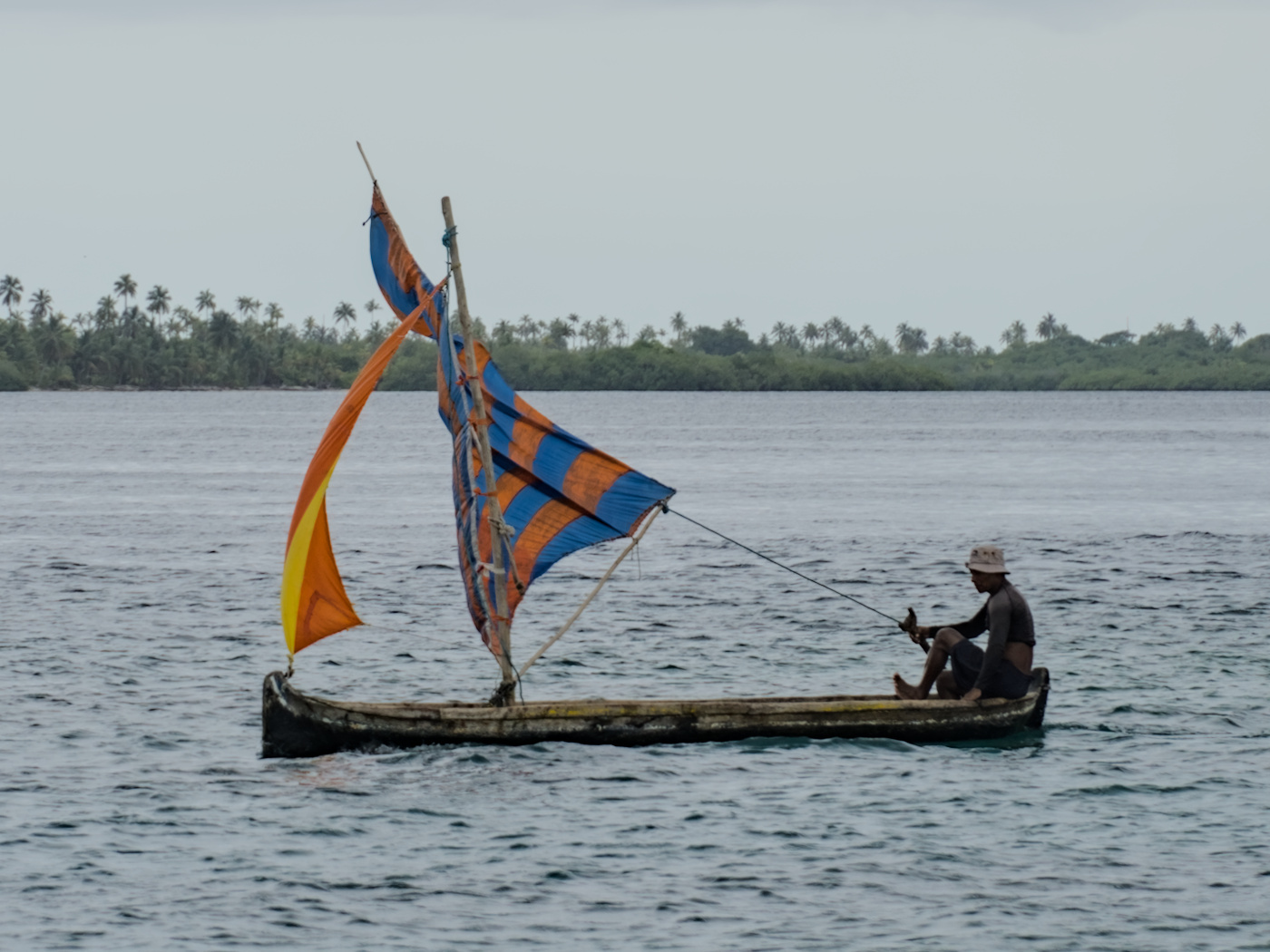




For me, it was a little paradise because I was pampered from morning to night, La Gitanita was wonderfully equipped and packed full of great products from the mainland and we also travelled on at some point. For the islanders, it’s everyday life in a deprived, isolated environment. I have no idea how they manage in their wooden huts when a strong tropical storm sweeps through.
No land in sight

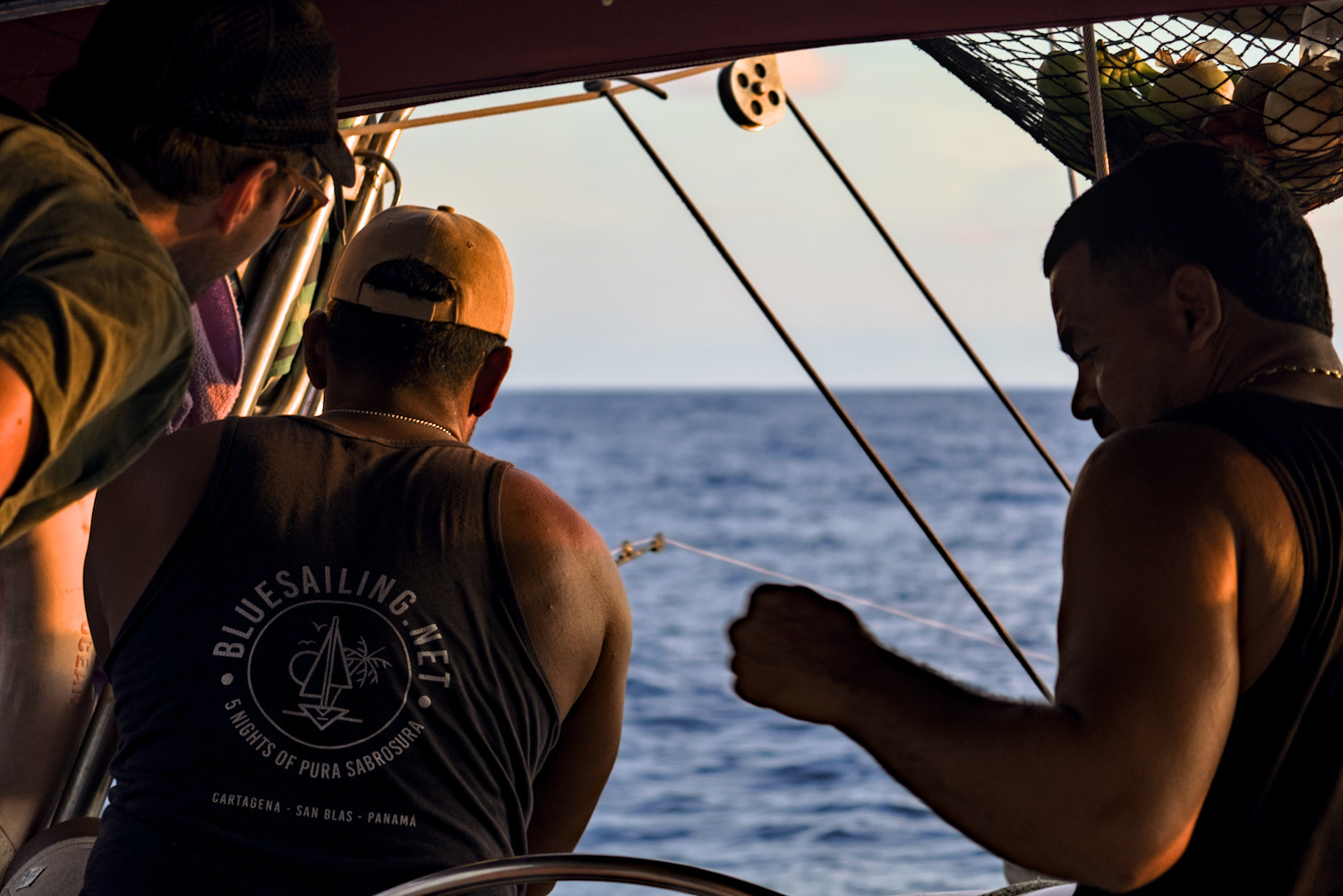
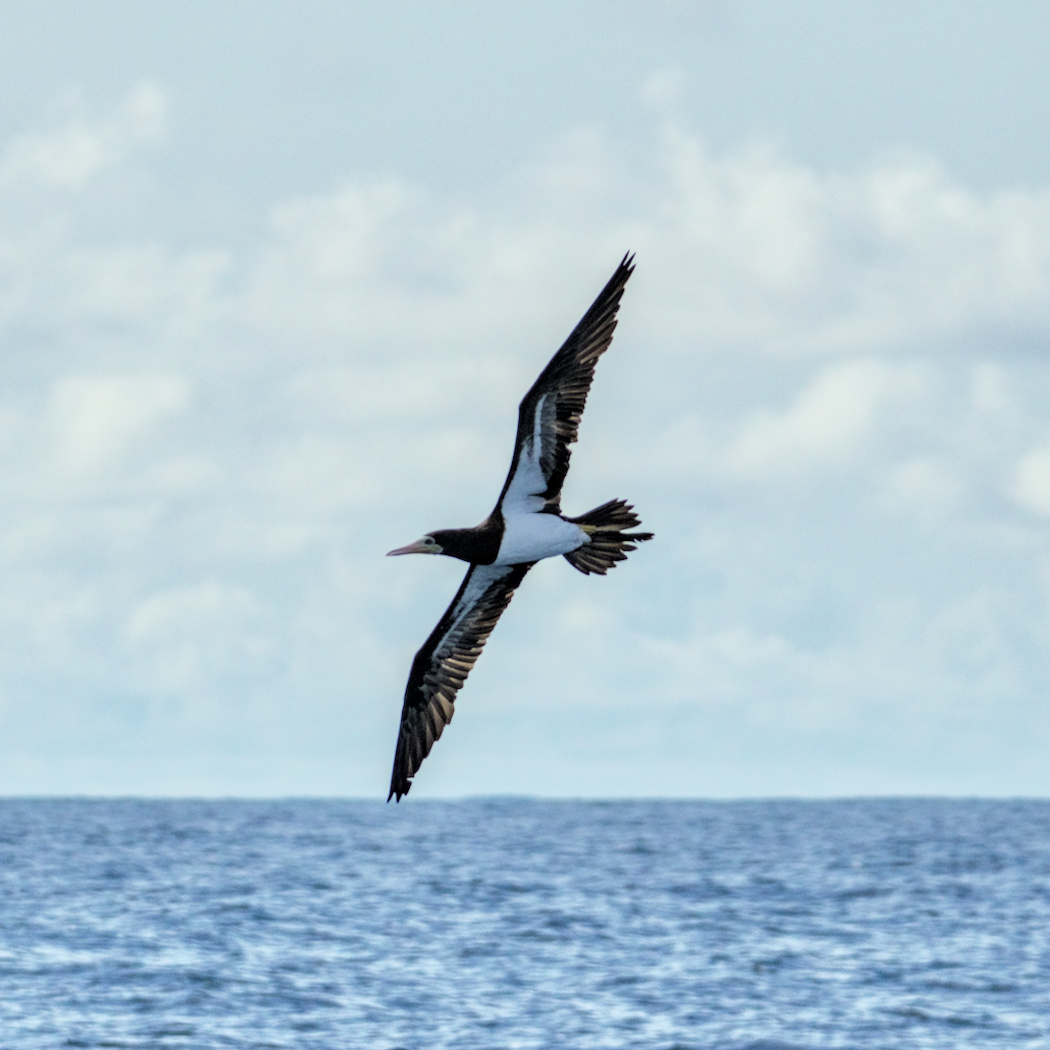
The morning after the fourth night on board, there was no more land in sight. We had been on the final passage to Colombia since the previous evening. It was rocking a little more than during the island hopping, but it was still a fairly calm sea and easy to endure. We were provided with particularly easily digestible food on this day, the crew probably wanted to avoid putting any additional strain on our stomachs from experience. It was a very relaxing day, with plenty of peace and quiet and the opportunity to gaze into the vastness of the sea forever.

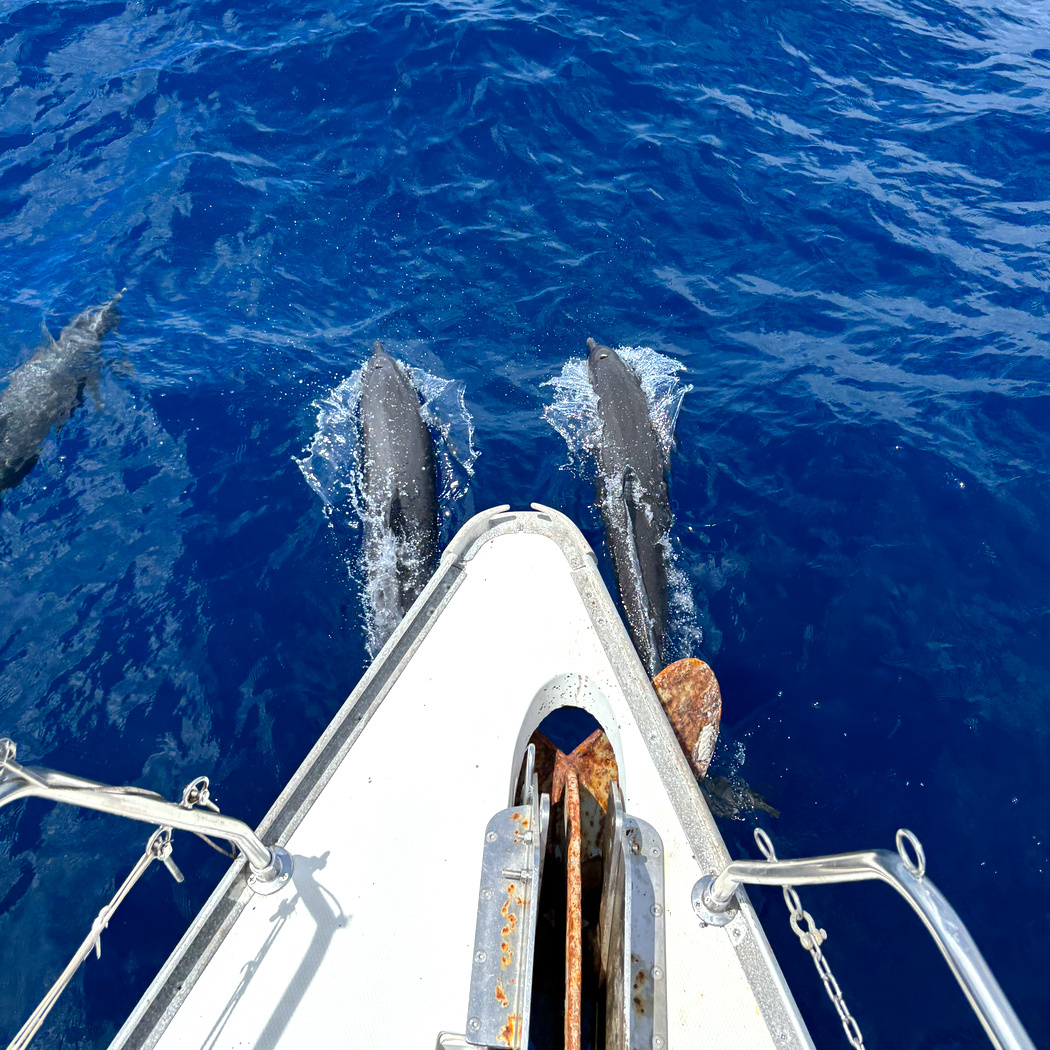



And even if it seems boring at first glance to just stare at the sea all day, with a horizon that looks the same in every direction, there was plenty to observe. In the morning, for example, two mighty albatrosses circled above us. At another time, the fishing rod twitched so that César and Ed had everyone’s attention as they reeled in their catch. But the highlight was definitely when some dolphins suddenly joined us and swam parallel to us to the left and right of the bow for some time. It really was just like I had seen in some films before, only this time my adrenaline was pumping.
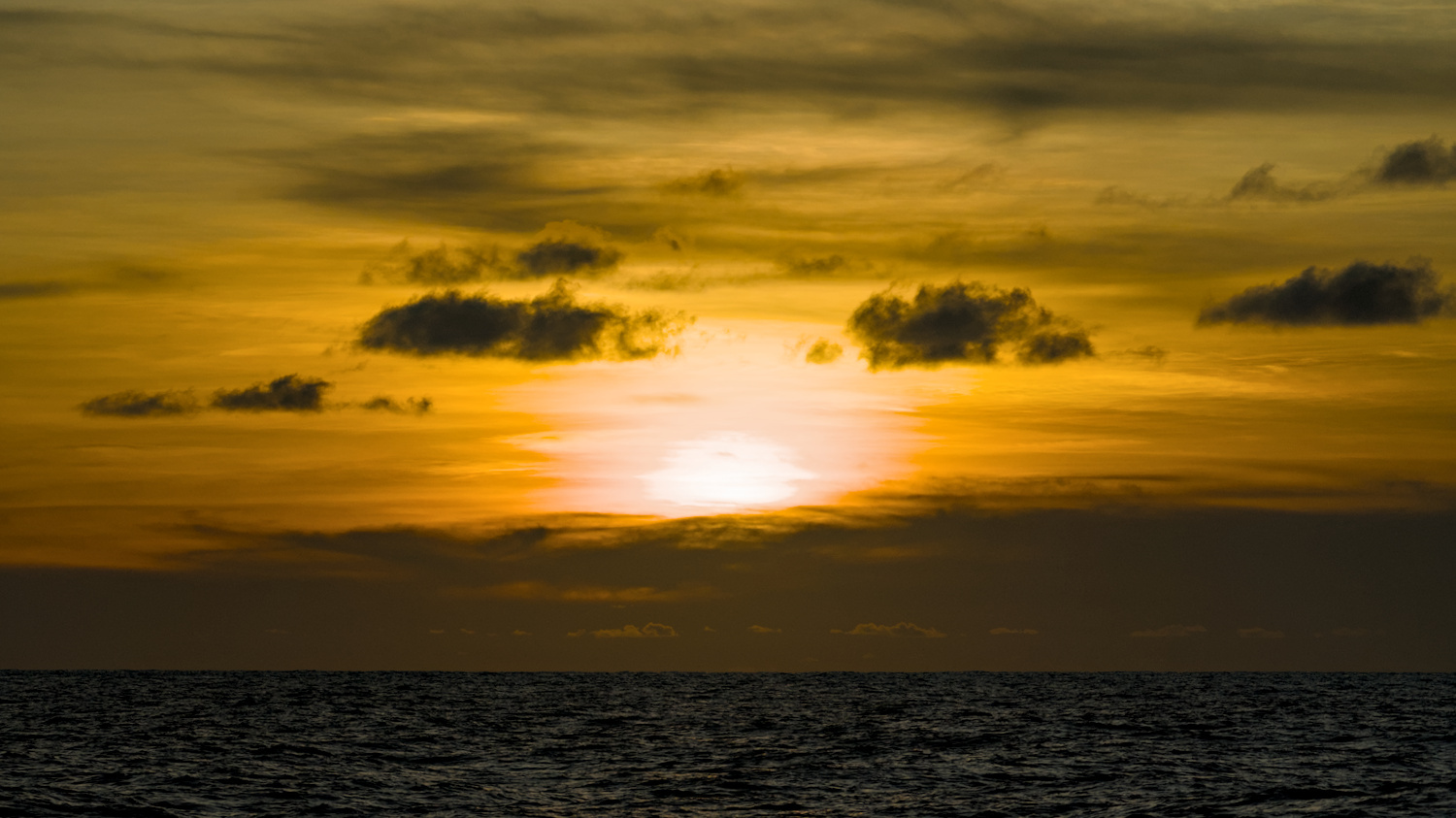
Sunrise in Cartagena
It’s the last day. I wake up early and go on deck. It is dawn. The first lights of Cartagena lie ahead of us. A little later, we enter the harbour. First we sail past industrial areas and the cargo port, then past neighbourhoods with modern high-rise buildings and finally into the marina. The sun rises over the city and bathes the sky in an orange-red light. What an atmospheric arrival in Colombia. I am excited and full of joy. I’m about to set foot on a new continent, the fourth since I started this trip. A continent that I want to cross by bike from here in the far north to Ushuaia in the far south. The continent I want to live in for a while, because I’m no longer just cycling to Ushuaia, but also to Santiago de Chile – the city where I’ll be living and working for a while. Yes, I have already accepted a job.



While we are in the harbour having our last breakfast together, César is at the migration office with our passports. When he comes back, one of us realises that the passports have been stamped exactly one month too early, on 4th June instead of 4th July. I’m the only one of us who wants to stay in the country a little longer and doesn’t know exactly how long – that would mean that a third of my tourist visa has already expired. So César collects all the passports again and goes back to migration. We will all meet up again in a pizzeria in the evening for a last meal together and to get our passports back. When I peel the bike out of its stretch wrap right on the dock next to the boat, I find the road dust I collected carefully in Central America completely dry on all corners of the bike – the packaging has held up, my travelling companion has made it to continent number four completely dry and undamaged.
It’s now been a year since this little luxury experience. I’ve been in South America for a year now. It’s time to tell all the stories that have happened here.
Travel time: June/July 2024
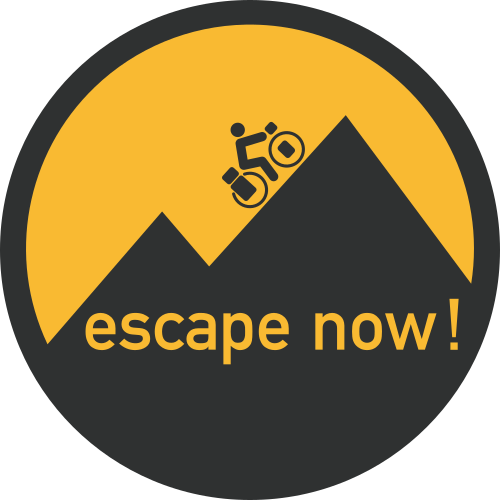
Leave a Reply